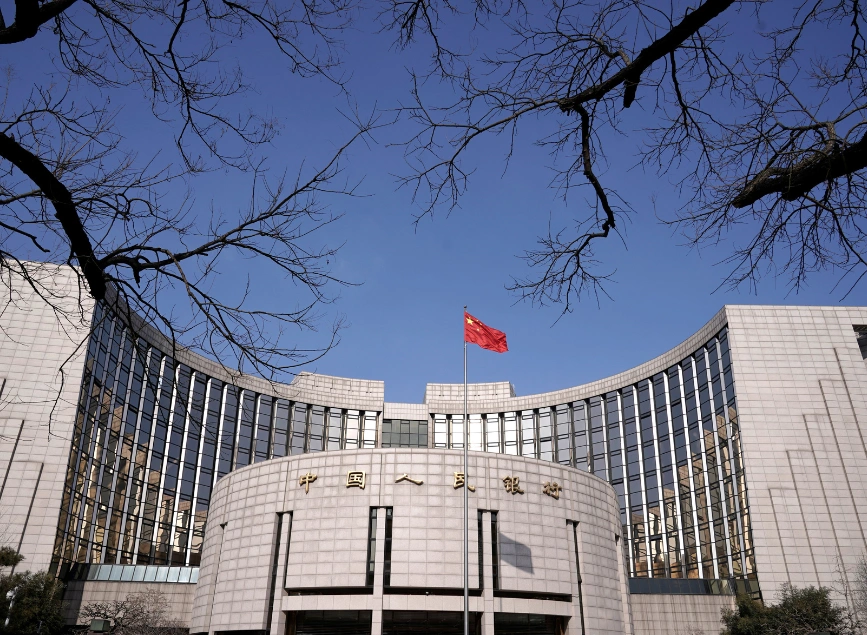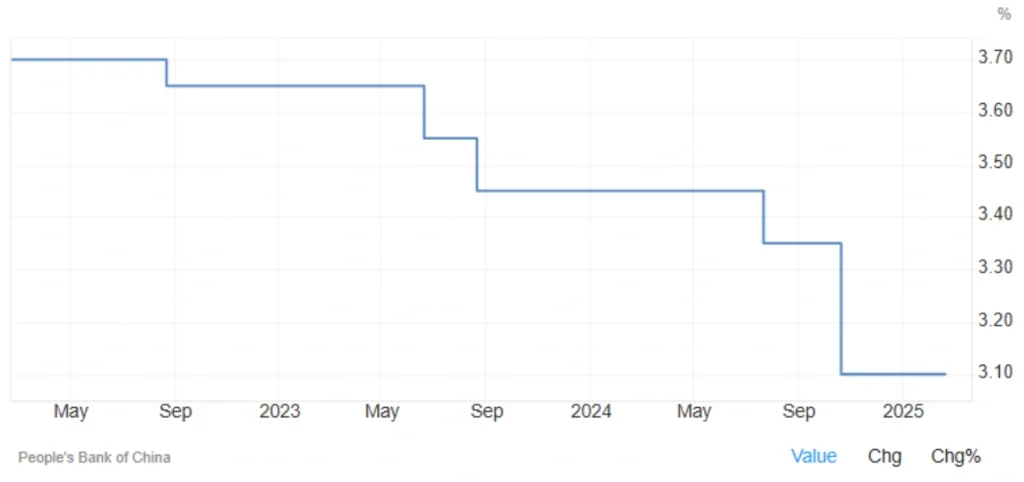
China’s Central Bank Holds Interest Rates Steady
In February 2025, the People’s Bank of China (PBoC) decided to keep its key interest rates unchanged for the fourth straight month, aligning with market expectations. This move reflects the central bank’s cautious approach to balancing economic stability, currency fluctuations, and external trade pressures.
Interest Rates at Historic Lows
The one-year Loan Prime Rate (LPR), a benchmark for most corporate and household loans, remained at 3.1 percent. The five-year LPR, which influences mortgage rates, stayed at 3.6 percent. These rates remain at historic lows, with the last reductions occurring in October and July 2024.
Why Did the PBoC Maintain Rates?
Recent fluctuations in the Chinese yuan played a key role in the decision. By keeping rates stable, the central bank aims to maintain confidence in the currency and reduce speculative pressure.
Impact of US Trade Policies
The return of Donald Trump to the US presidency has introduced a more aggressive trade stance, including higher tariffs on China’s Central Bank imports. These policies have put additional pressure on China’s exports and overall economic outlook, making a stable monetary policy more critical.
Supporting a Slowing Economy
China’s economic growth has been slowing due to weaker domestic demand and ongoing global uncertainties. The PBoC has signaled that it will adjust monetary policy as needed to provide support without triggering excessive inflation or financial instability.
Read More: China’s Manufacturing PMI Shows Unexpected Contraction
What’s Next for China’s Monetary Policy?
While the PBoC has kept rates steady, it has not ruled out future adjustments. If economic conditions worsen or inflation rises unexpectedly, the central bank may lower rates or adjust reserve requirements for banks to increase liquidity.
Commitment to Active Fiscal Policy
Beijing has reaffirmed its commitment to an active fiscal policy, meaning the government will likely introduce further tax cuts, infrastructure spending, and financial support for businesses.
Implementation of Economic Stimulus Measures
In September 2024, China introduced a broad stimulus package aimed at boosting domestic consumption and business investment. The government is now focused on effectively implementing these measures to support economic recovery.

Understanding China’s Interest Rates and Their Impact
The Loan Prime Rate (LPR) is the benchmark interest rate used for setting loan costs in China. It consists of the one-year LPR, which serves as the primary benchmark for corporate and consumer loans, and the five-year LPR, which is used mainly for mortgages and long-term lending.
Why Stable Interest Rates Matter
Economic Stability
Keeping interest rates steady reduces uncertainty in financial markets, helping businesses and consumers plan for the future without fear of sudden borrowing cost increases.
Inflation Control
With inflation concerns rising globally, a stable monetary policy allows China to closely monitor price trends before making any rate adjustments.
Currency Support
By maintaining rates, the PBoC helps prevent excessive depreciation of the yuan, which could destabilize foreign investment and trade flows.
Global Implications of China’s Decision
Lower borrowing costs encourage household spending, which is essential for China’s transition to a more consumption-driven economy.
Effect on Chinese Exports
A weaker yuan, combined with stable interest rates, makes Chinese goods more competitive in global markets. This could help offset trade tensions with the US.
Influence on Global Financial Markets
China’s monetary policy decisions are closely watched by global investors, central banks, and multinational corporations. Keeping rates steady signals a cautious but supportive approach to economic management, which could stabilize financial markets in Asia and beyond.
Conclusion
For the fourth consecutive month, the People’s Bank of China has kept interest rates unchanged, with the one-year LPR at 3.1 percent and the five-year LPR at 3.6 percent. This decision reflects the central bank’s focus on managing yuan volatility, responding to US trade policies, and supporting a slowing economy without overstimulating inflation. Looking ahead, China is expected to continue its active fiscal policies, while the PBoC remains open to future adjustments if necessary. The global economic landscape will be watching closely as China navigates its next steps in 2025.
Share
Hot topics

What Is Forex Regulation and Why It Matters
If you’ve been thinking about trading currencies or investing in the forex market, you might have seen words like “regulated,” “license,” or “authority.” They may sound like very boring legal...
Read more




Submit comment
Your email address will not be published. Required fields are marked *